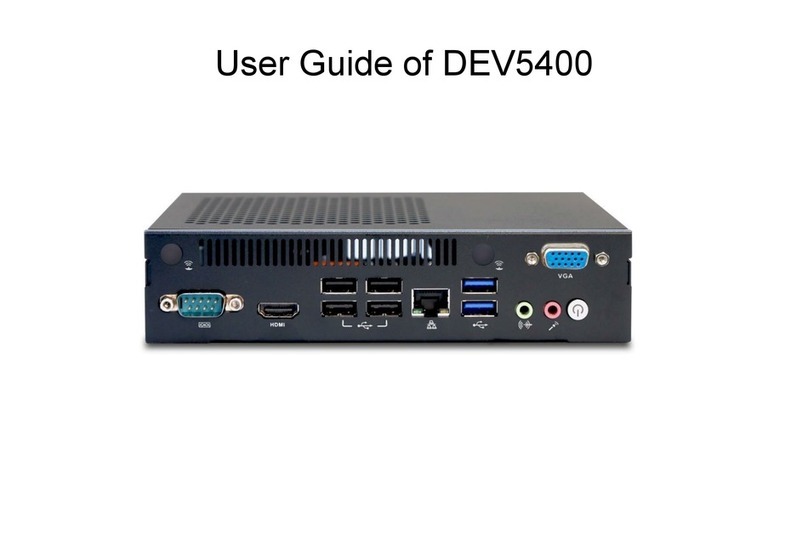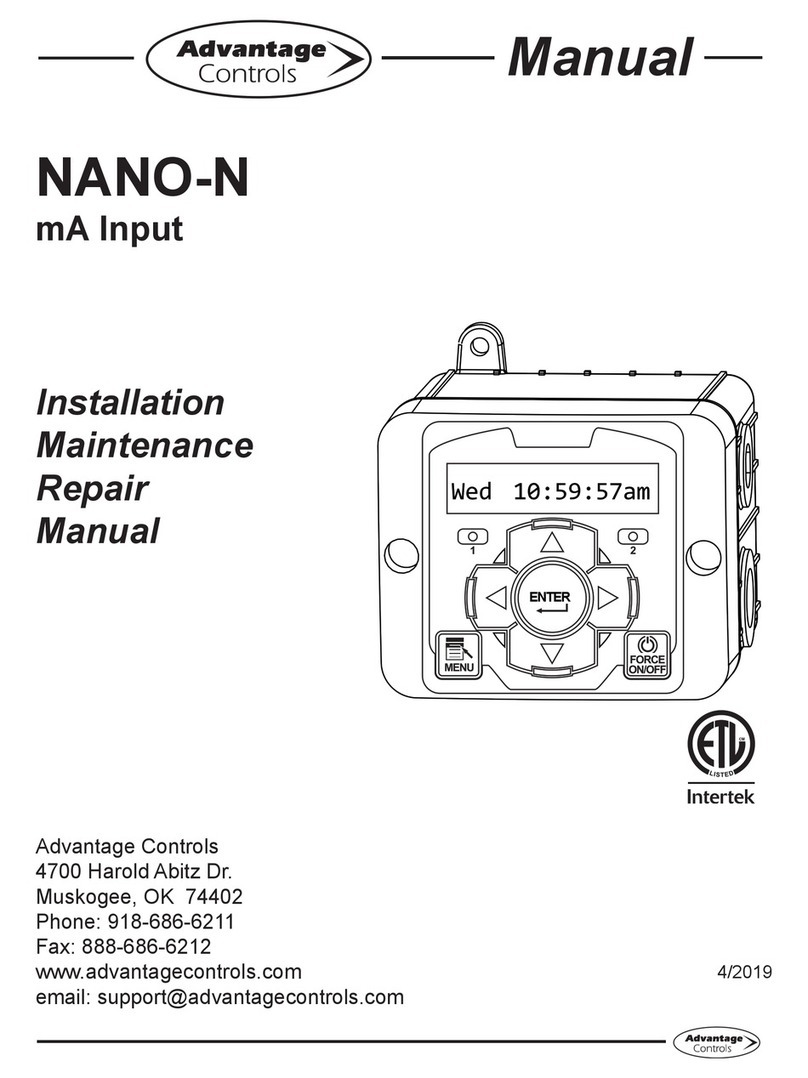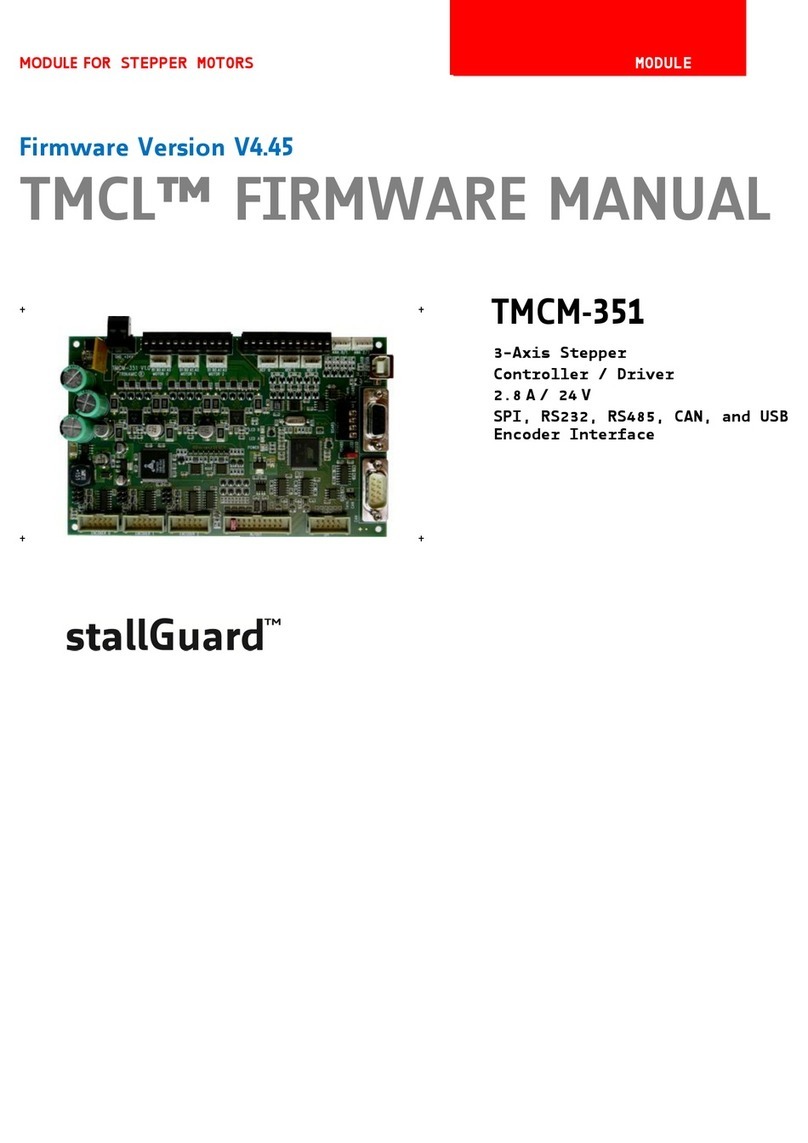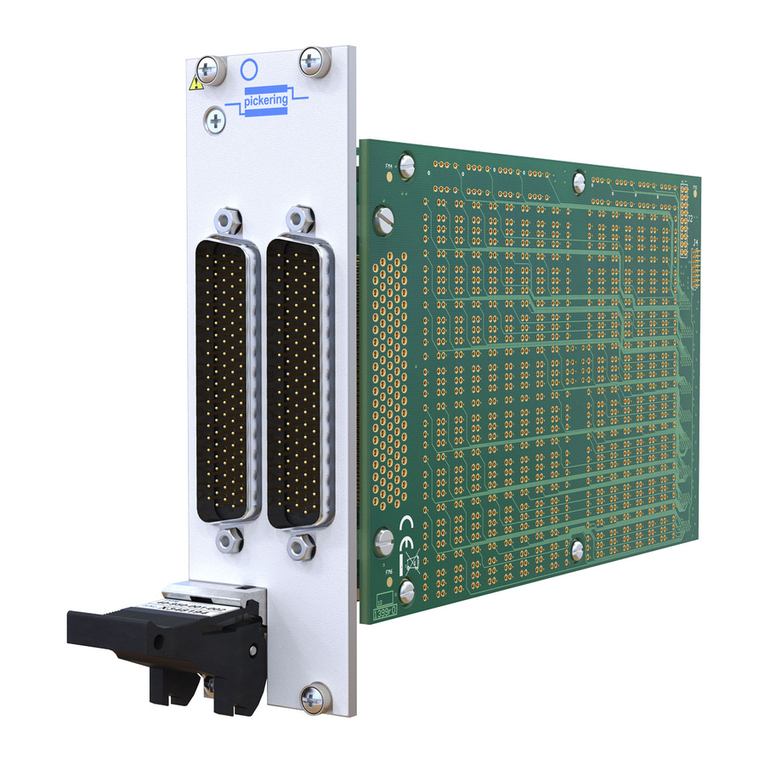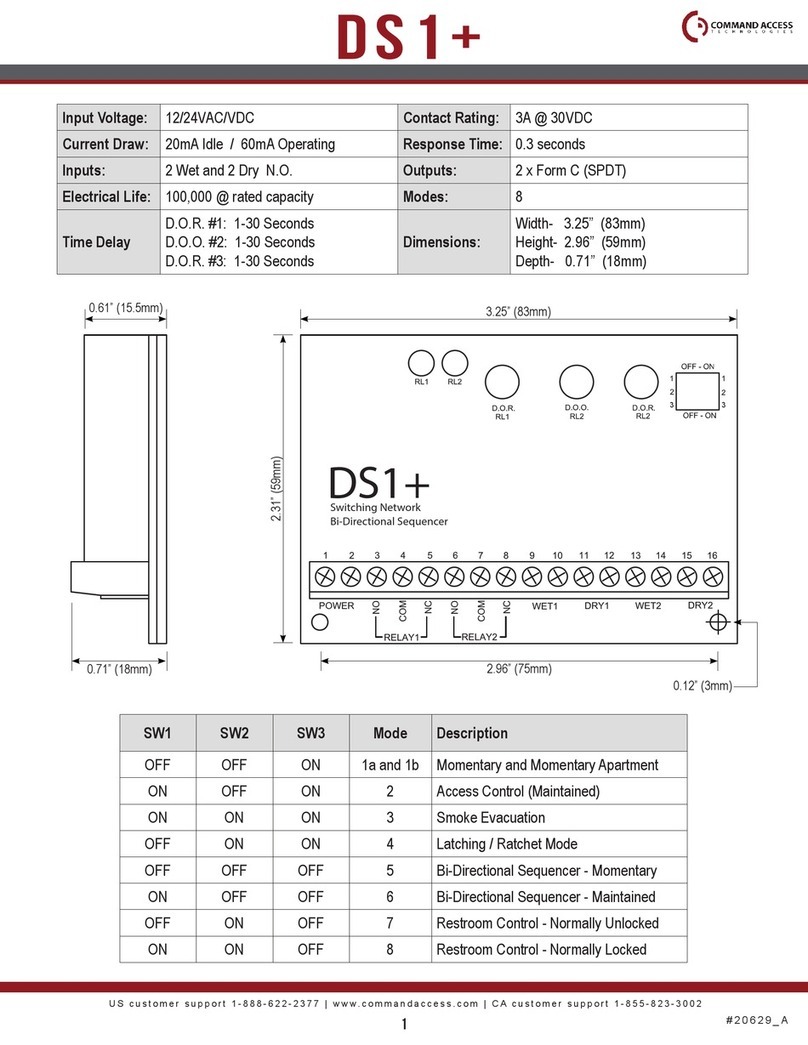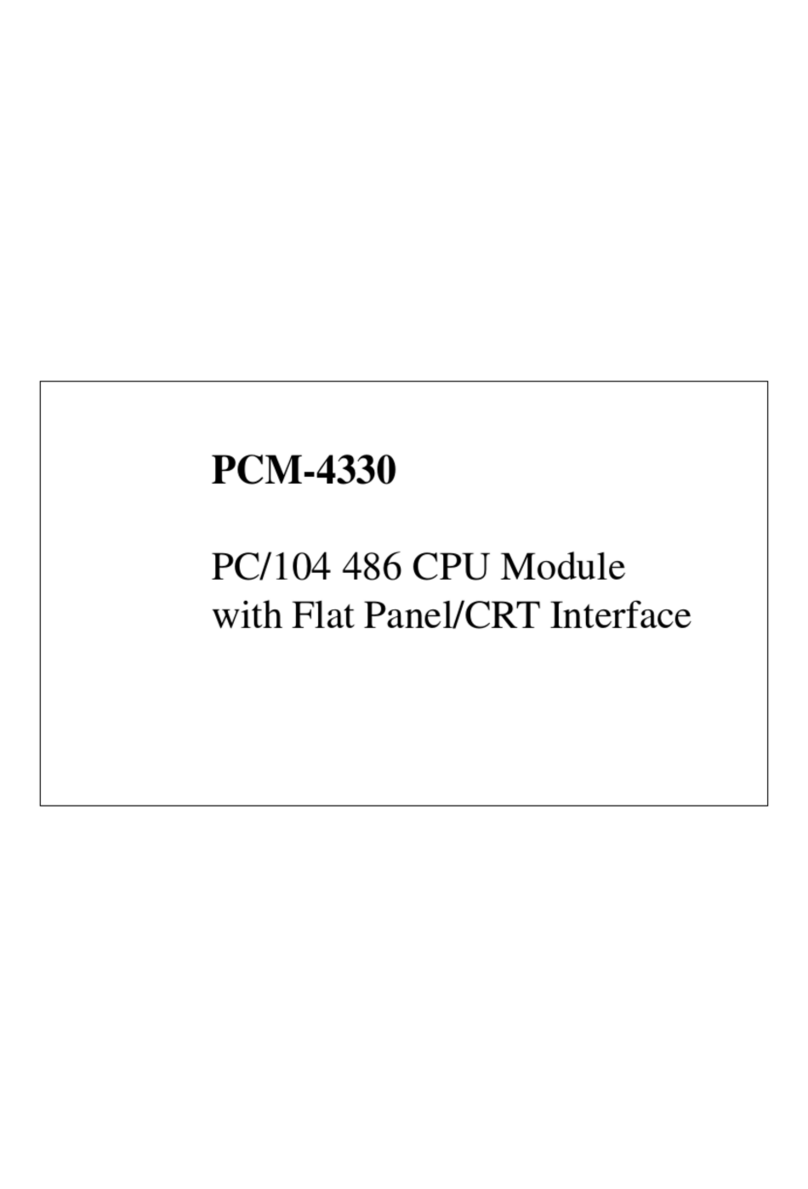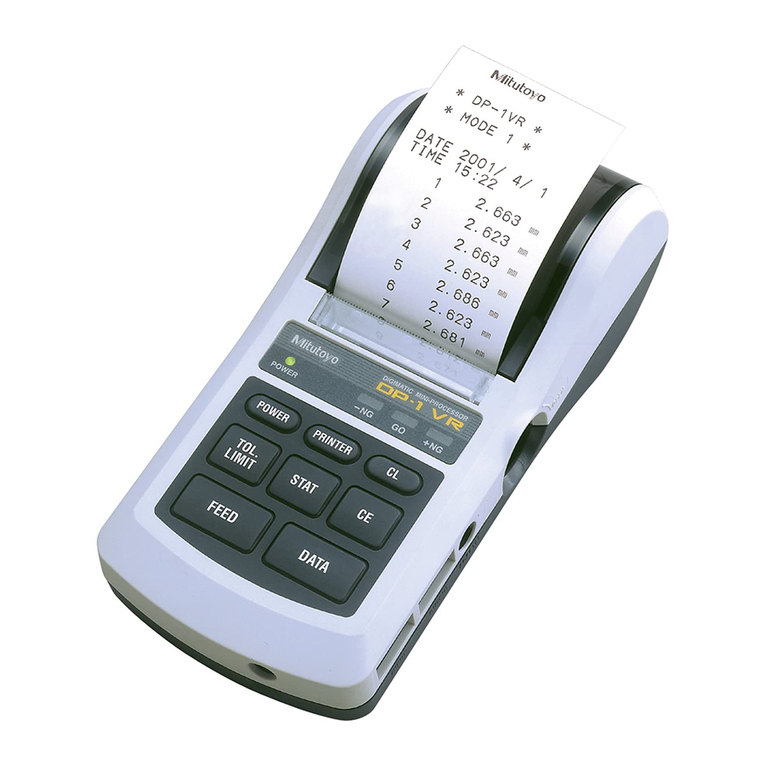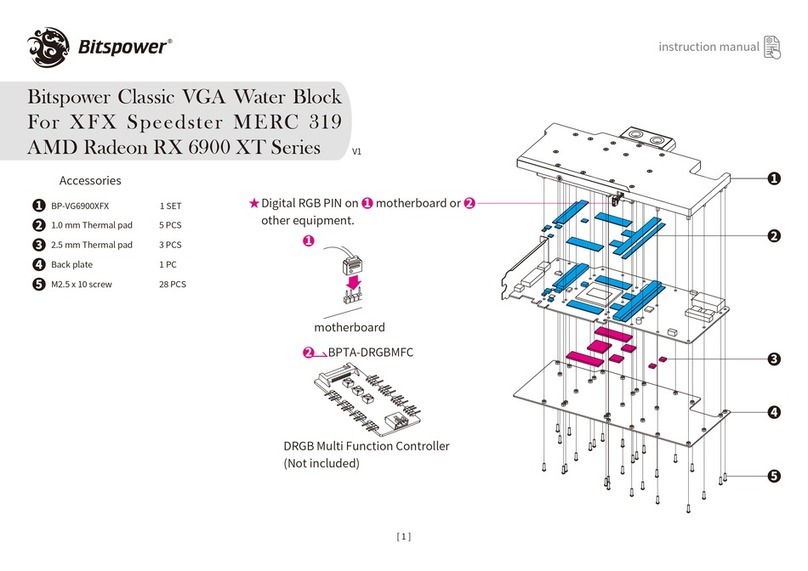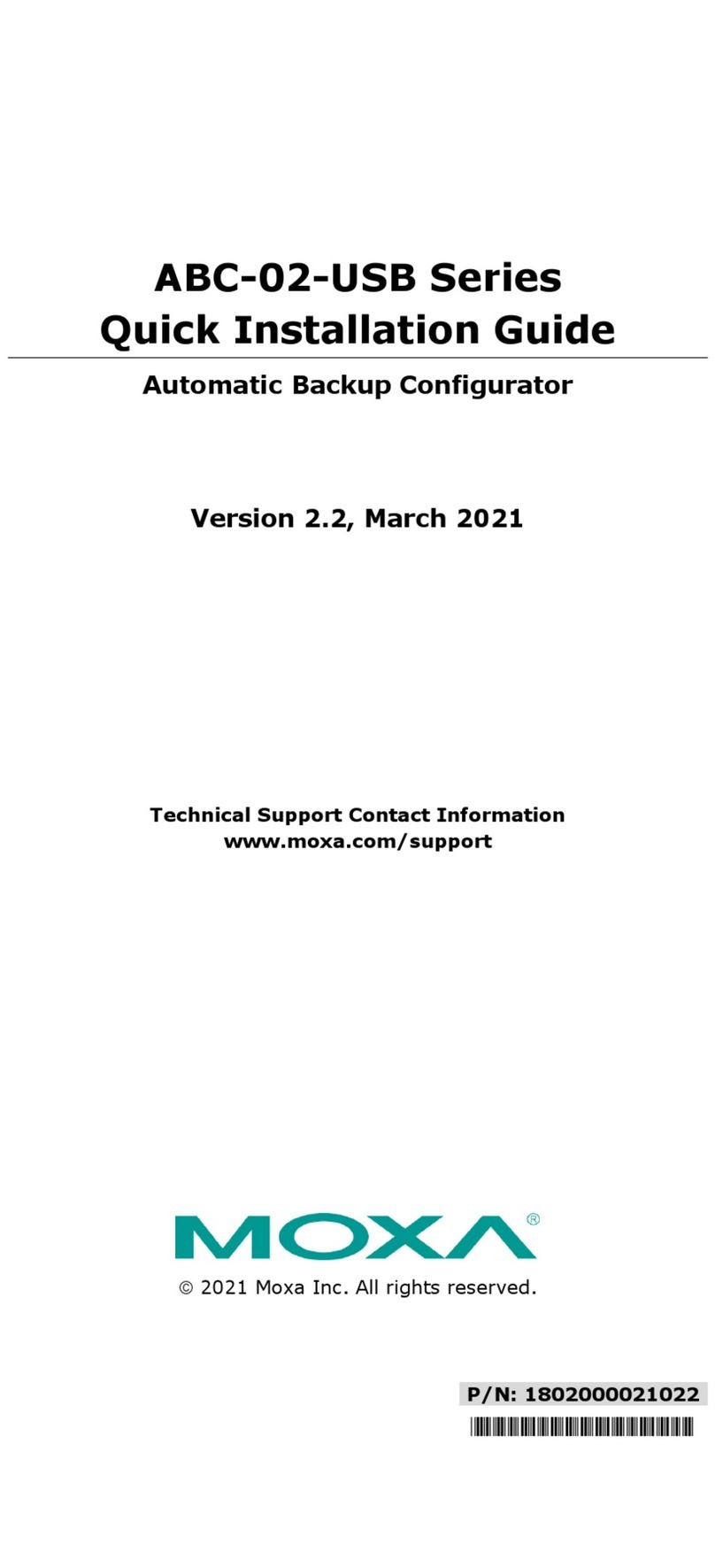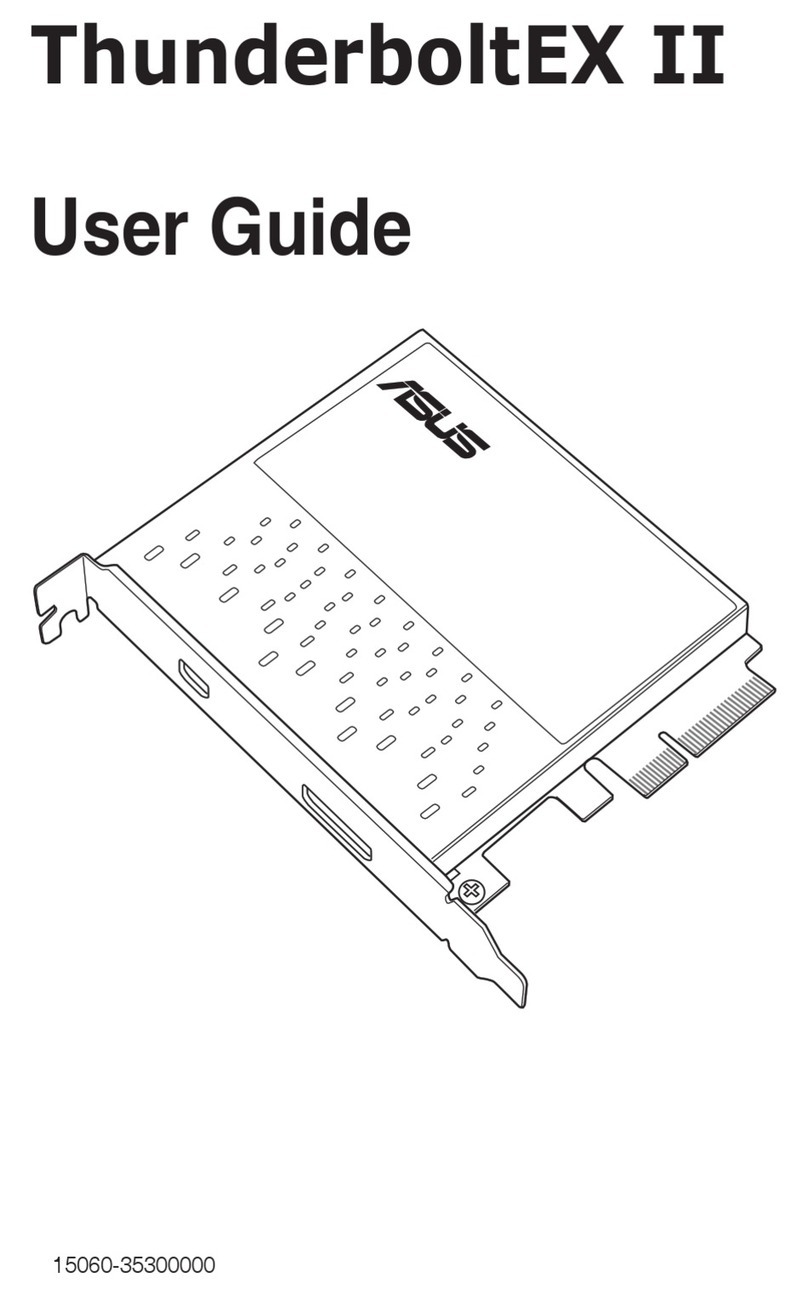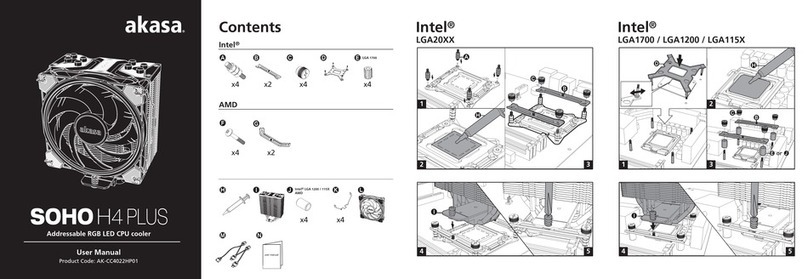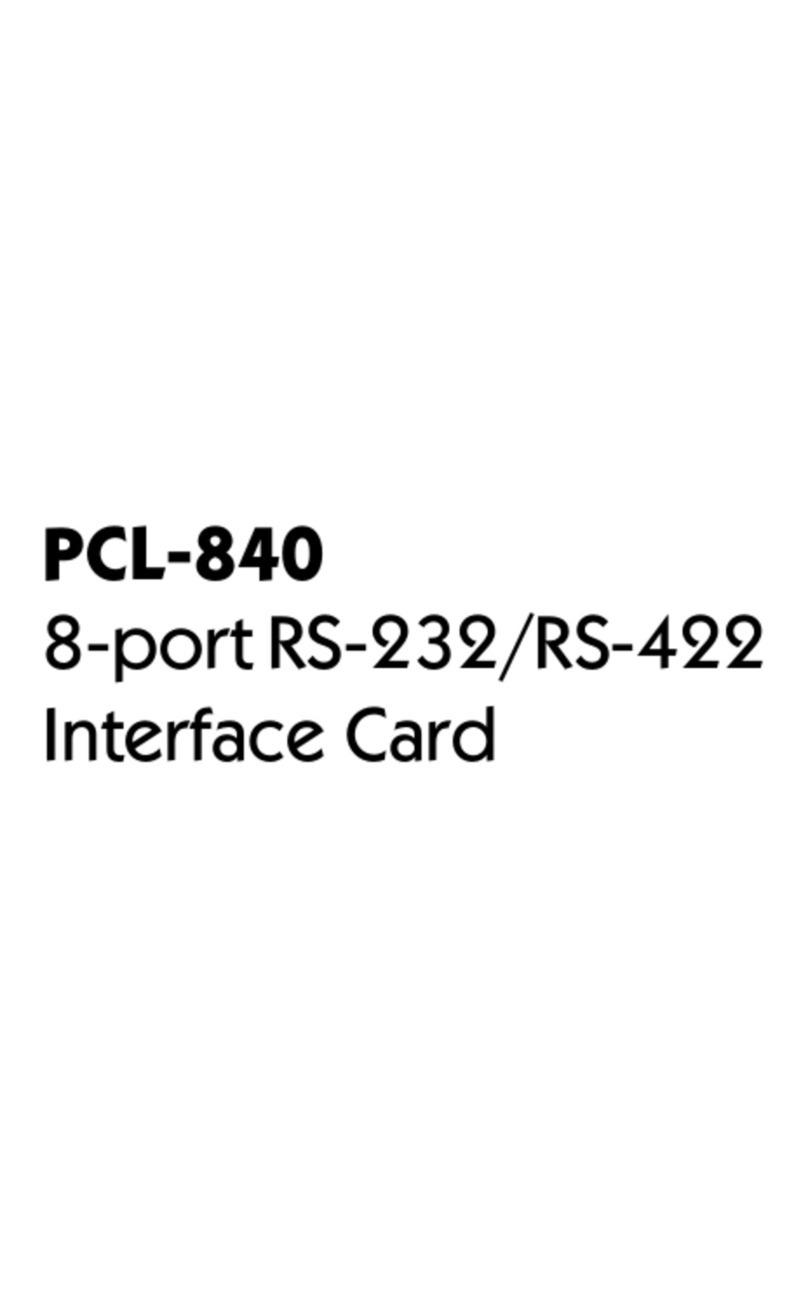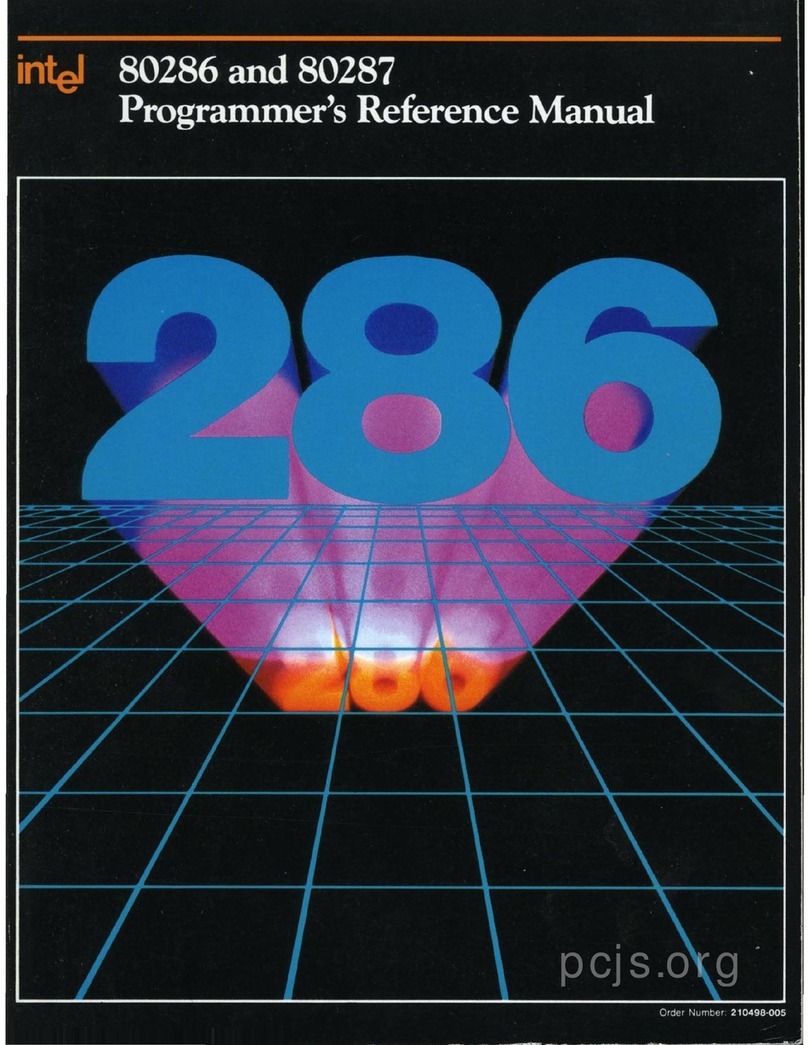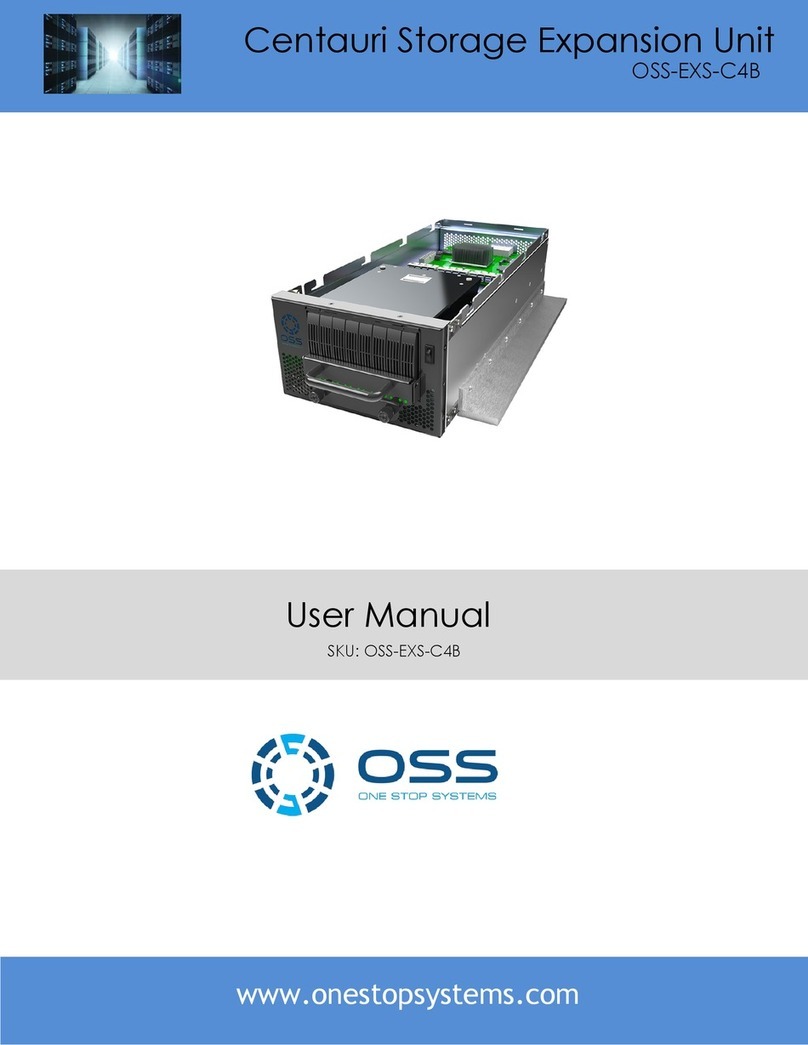AOpen AP41 User manual

AP41
User’s Guide

Copyright
Copyright Ó 1995 by this company. All rights reserved. No part of
this publication may be reproduced, transmitted, transcribed, stored in
a retrieval system, or translated into any language or computer
language, in any form or by any means, electronic, mechanical,
magnetic, optical, manual or otherwise, without the prior written
permission of this company.
ii

Disclaimer
This company ma es no representations or warranties, either
expressed or implied, with respect to the contents hereof and
specifically disclaims any warranties, merchantability or fitness for any
particular purpose. Any software described in this manual is sold or
licensed "as is". Should the programs prove defective following their
purchase, the buyer (and not this company, its distributor, or its
dealer) assumes the entire cost of all necessary servicing, repair, and
any incidental or consequential damages resulting from any defect in
the software. Further, this company reserves the right to revise this
publication and to ma e changes from time to time in the contents
hereof without obligation to notify any person of such revision or
changes.
AMI is a registered trademar of American Megatrends Inc.
Intel is a registered trademar of Intel Corporation.
PC XT/AT is a registered trademar of International Business Machines Corporation.
iii

Copyright
Other brand and product names are trademar s and/or registered trademar s of their
respective holders.
iv

FCC Statement
FCC Class B Radio Frequency
Interference Statement
Note
This equipment has been tested and found to comply with the limits
for a Class B digital device, pursuant to Part 15 of FCC Rules. These
limits are designed to provide reasonable protection against harmful
interference in a residential installation. This equipment generates,
uses, and can radiate radio frequency energy and, if not installed and
used in accordance with the instructions, may cause harmful
interference to radio communications. However, there is no
guarantee that interference will not occur in a particular installation. If
this equipment does cause harmful interference to radio or television
reception, which can be determined by turning the equipment off and
on, the user is encouraged to try to correct the interference by one or
more of the following measures:
1. Reorient or relocate the receiving antenna.
2. Increase the separation between the equipment and receiver.
3. Connect the equipment into an outlet on a circuit different from that
to which the receiver is connected.
4. Consult the dealer or an experienced radio/television technician for
help.
Notice 1
The changes or modifications not expressly approved by the party
responsible for compliance could void the user's authority to operate
the equipment.
Notice 2
Shielded interface cables, if any, must be used in order to comply with
emission limits.
iv

About this Manual
Purpose and Scope
This manual tells how to install and configure the system board.
Organization
This manual consists of three chapters and two apendices:
Chapter 1, Features, covers the specifications, layout, and components of
the system board.
Chapter 2, Hardware Setup, tells how to set the jumpers, upgrade the CPU
and the system memory, install the system board and add expansion cards.
Chapter 3, AMI BIOS, explains the system BIOS and tells how to configure
the system by setting the BIOS parameters.
Appendix A, Jumper Summary, gives you a tabular summary of the jumper
settings discussed in Chapter 2.
Appendix B, SiS Drivers, tells how to install the drivers supported by SiS.
v

About this Manual
Conventions
The following conventions are used in this manual:
Text entered by user,
default settings
Represent text input by the user,
default settings and recommended
selections
message displayed Denotes actual messages that appear
on screen
a, e, s, etc Represent the actual eys that you
have to press on the eyboard.
NOTE
Gives bits and pieces of additional
information related to the current topic.
WARNING
Alerts you to any damage that might
result from doing or not doing specific
actions.
CAUTION
Suggests precautionary measures to
avoid potential hardware or software
problems.
IMPORTANT
Reminds you to ta e specific action
relevant to the accomplishment of the
procedure at hand.
TIP
Tells how to accomplish a procedure
with minimum steps through little
shortcuts.
vi

Table of Contents
1 Features
Specifications.......................................................1-2
Board Layout.......................................................1-3
System Board Parts.............................................1-4
Microprocessor............................................1-4
ASICs 1-4
AMI BIOS....................................................1-4
Expansion Slots..........................................1-5
DRAM Soc ets............................................1-5
Two-Channel PCI Mode 4 IDE...................1-5
Super I/O Controller....................................1-6
Keyboard Connector...................................1-6
SRAM1-6
Power Management....................................1-6
2 Hardware Setup
CPU Options........................................................2-1
5V CPU Options..........................................2-1
3.45 V CPU Options....................................2-2
ESD Precautions.................................................2-2
Installing a Microprocessor..................................2-3
Upgrading the Microprocessor............................2-4
Jumper Settings...................................................2-5
vii

Table of Contents
Changing the CPU Type.............................2-7
Setting the Oscillator Frequency..............2-14
Setting the Flash ROM Type....................2-14
Selecting the ECP DMA Channel.............2-15
Enabling the FDC and Super I/O Chip.....2-15
Selecting the Cache Size..........................2-16
Clearing the CMOS...................................2-18
Memory Configuration.......................................2-18
Installing a SIMM......................................2-19
Removing a SIMM....................................2-20
Connectors........................................................2-21
Multifunction Connector............................2-21
Keyboard Connector.................................2-23
Power Connector......................................2-24
Brea /Suspend Connector........................2-24
Fan Power Connectors.............................2-25
External Battery Connector.......................2-26
Installation..........................................................2-27
Installing the System Board......................2-27
Installing Expansion Boards.....................2-28
3 AMI BIOS
AMI BIOS Setup Main Menu...............................3-1
Standard CMOS Setup........................................3-2
viii

Table of Contents
Date/Time....................................................3-2
Floppy Drives A and B................................3-3
Hard Dis Drives.........................................3-4
Advanced CMOS Setup......................................3-5
Typematic Rate (Chars./Sec.)....................3-7
System Keyboard........................................3-7
Primary Display...........................................3-7
Above 1 MB Memory Test..........................3-8
Memory Test Tic Sound............................3-8
Hit “Del” Message Display..........................3-8
Extended BIOS RAM Area.........................3-8
Wait for F1 If Any Error...............................3-8
System Boot-up Num Loc .........................3-9
Numeric Processor Test.............................3-9
Floppy Drive See at Boot..........................3-9
Floppy Drive Swapping...............................3-9
System Boot-up Sequence.........................3-9
System Boot-up CPU Speed....................3-10
Turbo Switch Function..............................3-10
Password Chec ing..................................3-10
CPU Selection...........................................3-10
Cache3-10
Shadow C800, D000, D800, 32K.............3-12
ix

Table of Contents
Video Shadow...........................................3-12
Main BIOS Cacheable..............................3-12
Cacheable C800, D000, D800, 32 K........3-12
Video Shadow Cacheable........................3-13
Secondary IDE Drives Present.................3-13
Primary 1st IDE Bloc Mode.....................3-13
Primary 2nd IDE Bloc Mode....................3-13
Secondary 1st IDE Bloc Mode................3-14
Secondary 2nd IDE Bloc Mode...............3-14
Chipset Setup Mode.................................3-15
Chipset Features Setup.....................................3-15
Memory Speed (DRAM)............................3-17
Cache Speed (SRAM)..............................3-17
CPU-to-PCI Memory Post Write Buffer....3-18
CPU-to-Memory Burst Write.....................3-18
DRAM Type (Refresh)..............................3-18
Power Management Setup................................3-22
BIOS Power Management Mode..............3-22
Advanced Power Management................3-24
Doze Timer................................................3-24
Standby Timer...........................................3-24
Suspend Timer..........................................3-24
Wa e-up Events........................................3-25
x

Table of Contents
Monitor Type.............................................3-25
Display Off After........................................3-25
HDD Off After............................................3-25
Deturbo After.............................................3-26
Brea Switch.............................................3-26
Peripheral Setup................................................3-26
Programming Mode..................................3-27
Onboard FDC............................................3-27
Serial Port 1..............................................3-27
Serial Port 2..............................................3-27
Parallel Port...............................................3-27
IRQ Active.................................................3-28
Parallel Port Mode....................................3-28
Utility Setup........................................................3-28
Detect Master and Detect Slave...............3-28
Color Set...................................................3-29
Default Setup.....................................................3-30
Original......................................................3-30
Optimal......................................................3-30
Fail-safe....................................................3-31
Security Setup...................................................3-32
Password..................................................3-32
Anti-virus...................................................3-34
xi

Table of Contents
Exit Setup..........................................................3-35
NCR SCSI BIOS and Drivers............................3-36
Appendix A Jumper Summary
Appendix B SiS Drivers
xii

Chapter
Features 1
The AP41 is a 486-based system board that utilizes the PCI/ISA
architecture. It supports the 486S , D , D 2, and D 4 series
microprocessors. It has four ISA-AT and three PCI slots for future
expansion. The system memory is expandable to 128 MB by adding
single in-line memory modules (SIMMs). The second-level cache is
upgradable to 512 KB and supports both the write-back and write-
through modes.
Two SiS application-specific integrated circuit (ASIC) chipsets with
built-in two-channel, PCI mode 4 IDE controller and a super I/O
controller are also incorporated in the design to further enhance
system performance. The board measures 220 mm x 250 mm (baby-
AT size).
User’s Guide 1-1

Features
Specifications
Microprocessor 5V CPUs
Intel SL-enhanced
Intel S /D /D 2
AMD D /D 2
Cyrix D /D 2
Intel P24D
Intel P24T
3.45V CPUs
Intel D 4
AMD D 2
AMD D 4/D 4-S
Cyrix D 2/D 4/5 86
TI D 2
Maximum Memory 128 MB
SIMM Sockets Four 72-pin, 32-bit
ASICs SiS85C496
SiS85C497
Bus Architecture ISA, PCI
Expansion Slots Four ISA slots, Three PCI slots
Ports One parallel port (ECP/EPP)
Two serial ports
Two-channel PCI mode 4 IDE
One floppy disk connector
Onboar Battery CR2032 3.0V lithium battery
RTC 146818 built-in 85C497
Secon ary Cache 128 KB/256 KB/512 KB
BIOS AMI Plug-and-Play WinBIOS
Boar Size 220 mm x 250 mm (baby-AT)
1-2 User’s Guide

Features
Boar Layout
1. Keyboard connector 11. HDD LED connector
2. COM1 connector 12. BIO
3. COM2 connector 13. I A slots
4. Power connector 14. PCI slots
5. 72-pin IMM sockets 15. Keyboard controller
6. ZIF-type CPU socket 16. IDE2 connector
7. 2-pin fan connector 17. IDE1 connector
8. 4-pin fan connector 18. FDD connector
9. Tag RAM 19. Battery
10. econd-level cache 20. Parallel port connector
User’s Guide 1-3

Features
System Boar Parts
Microprocessor
The AP41 system board supports the Intel SL-enhanced, Intel 486S /
D /D 2/D 4, AMD 486D /D 2/D 4/D 4-S, Cyrix
486D /D 2/D 4/5 86 and TI 486D 2 series microprocessors.
Chapter 2 gives details on how to upgrade the processor.
1-4 User’s Guide

Features
ASICs
The two ASICs onboard are the SiS85C496 and SiS85C497. The
SiS85C496 acts as the PCI and CPU memory controller (PCM). It
integrates the host bridge, the cache and main memory DRAM
controller, the PCI bridge, the built-in IDE controller and the Fast Slow
Link (FS-Link) bus.
The SiS85C497 is the AT-bus controller and megacell (ATM)
component that acts as an interface the PCI/CPU/memory bus and
the ISA bus.
AMI BIOS
The AMI BIOS (basic input-output system) resides in the flash ROM
chip. This contains the program that performs the power-on self-tests
(POST) upon booting. During POST, this program activates the
peripheral devices, tests onboard memory, and prepares the system
for operation. Chapter 3 gives more information on the AMI BIOS.
Expansion Slots
The board expansion slots consist of four ISA-AT and three PCI slots.
These expansion slots are the parallel bars on the system board.
There are rows of golden pins inside each slot that serve as a clutch
to secure the contacts of expansion boards. Chapter 2 tells how to
install expansion boards.
User’s Guide 1-5

Features
DRAM Sockets
The system board has four 72-pin DRAM sockets that expand system
memory from 1 MB to a maximum of 128 MB. These sockets accept
single- and double-density SIMMs. Chapter 2 tells how to install
memory modules.
wo-Channel PCI Mode 4 IDE
The board utilizes the enhanced-integrated drive electronics (E-IDE)
interface that improves the data transfer rate. It also allows the
system to support four E-IDE devices, including fixed disks with more
than 528-MB capacity. This feature offers users increased data
storage capacity.
Super I/O Controller
The onboard super I/O controller chip supports two UART
16450/16550-compatible serial ports and a parallel port (SPP, EPP,
ECP)1. It also accommodates 1.2-/1.44-/2.88-MB disk drives allowing
full-range access to 5.25-inch drives with 360-KB or 1.2-MB format
and 3.5-inch drives with 720-KB, 1.44-MB or 2.88-MB format.
Keyboard Connector
The keyboard connector at the rear of the system board allows you to
connect any AT-compatible keyboard.
1 SPP: Standard Parallel Port
EPP: Enhanced Parallel Port (IEEE 1284 compliant)
ECP: Extended Capabilities Port (IEEE 1284 compliant)
1-6 User’s Guide

Features
SRAM
The system board supports 128-KB, 256-KB and 512-KB second-
level, write-back and write-through cache.
Power Management
The AP41 conforms to the power-saving standards of the U.S.
Environmental Protection Agency (EPA) Energy Star program. The
system board features four power-saving modes that reduce power
consumption. For more information on the power-saving modes, see
Chapter 3.
User’s Guide 1-7
Table of contents
Other AOpen Computer Hardware manuals
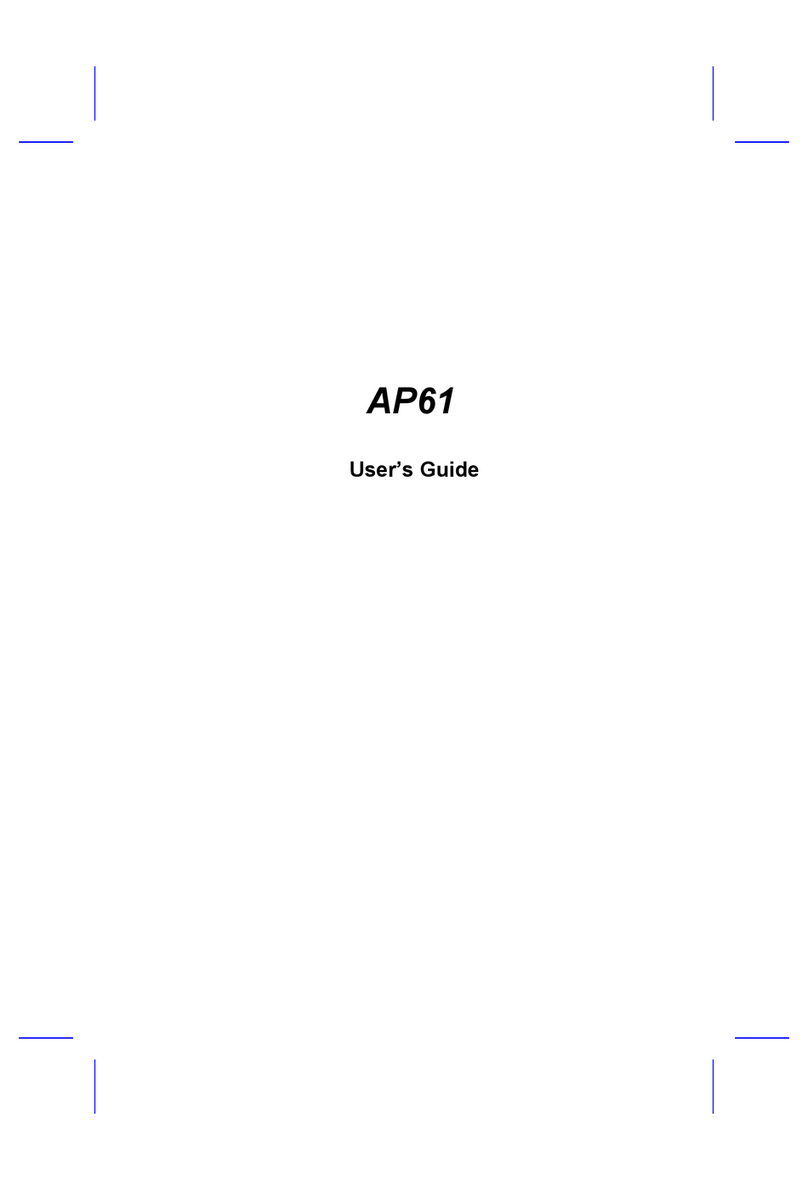
AOpen
AOpen AP61 User manual
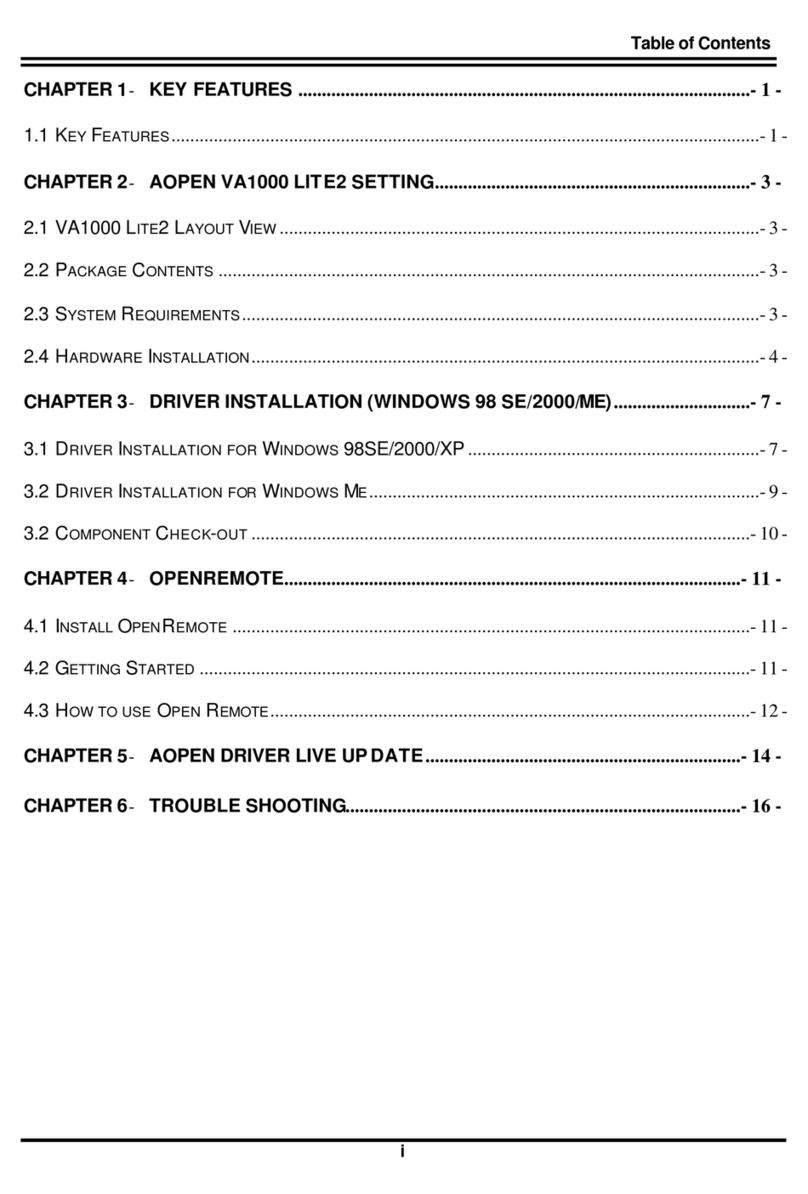
AOpen
AOpen VA1000 Lite2 User manual
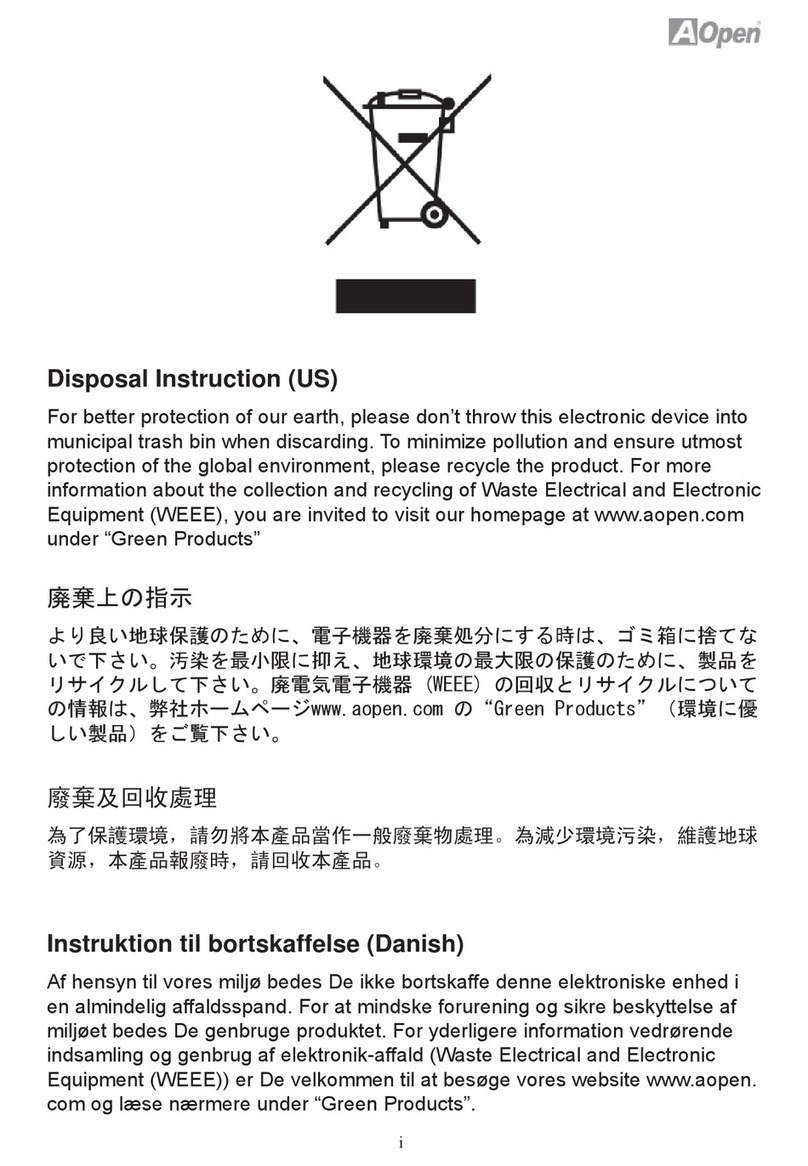
AOpen
AOpen i55HMt-HD User manual
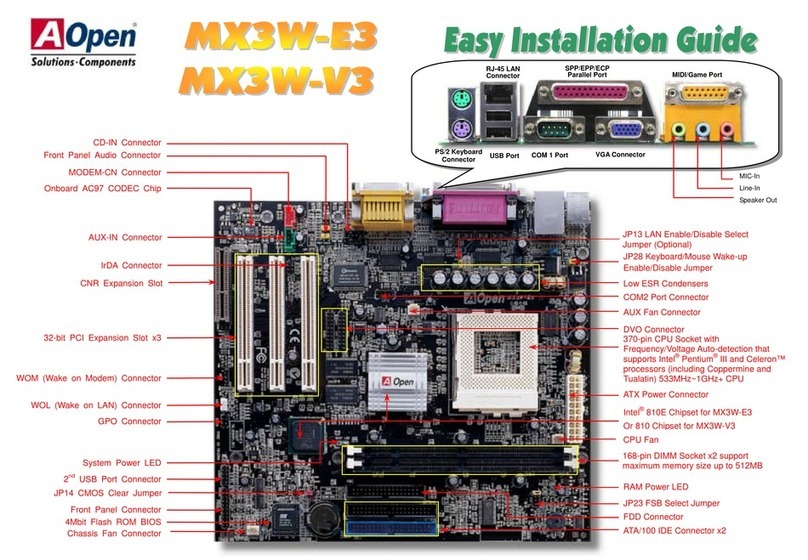
AOpen
AOpen MX3W-E3 Datasheet
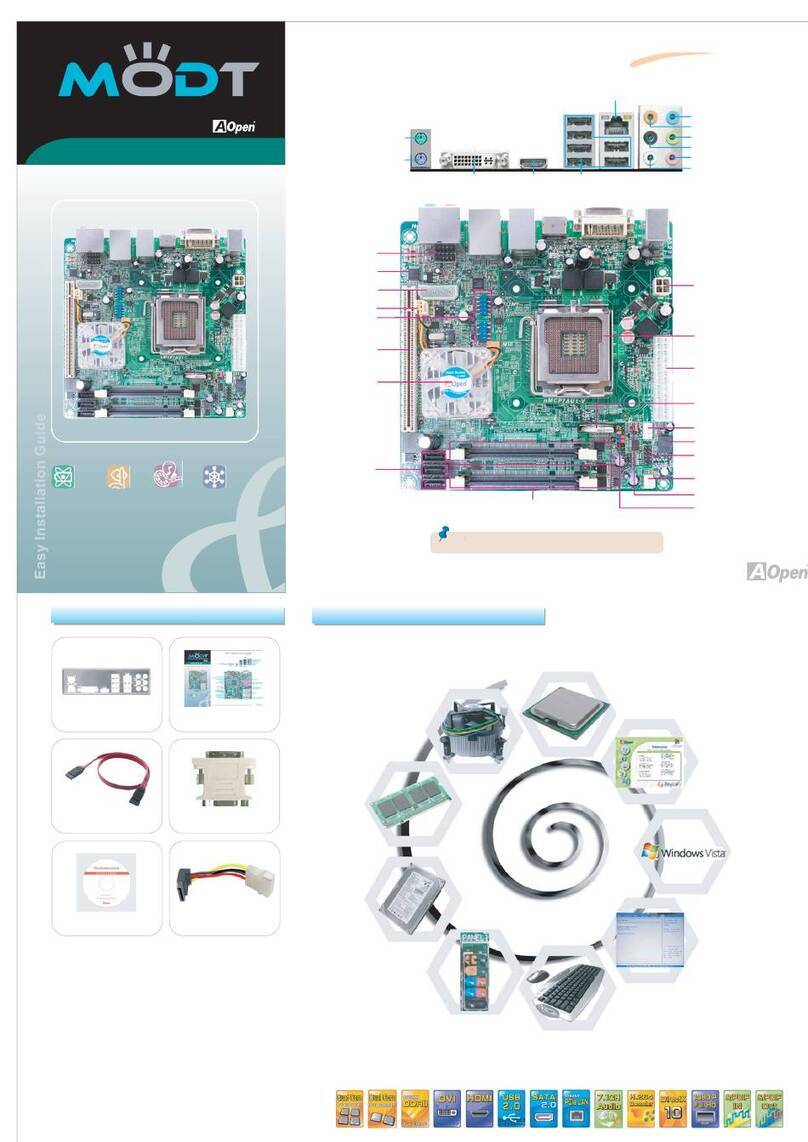
AOpen
AOpen Modt nMCP7AUt-V Series User manual
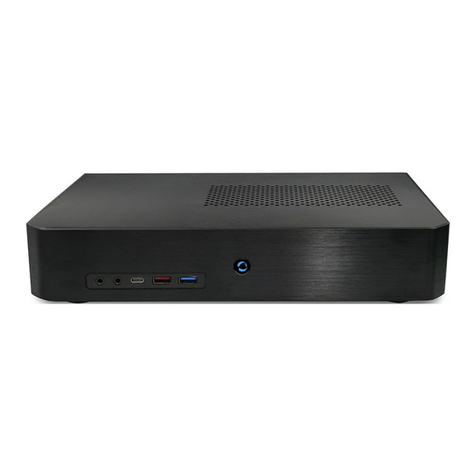
AOpen
AOpen DEV7610 User manual
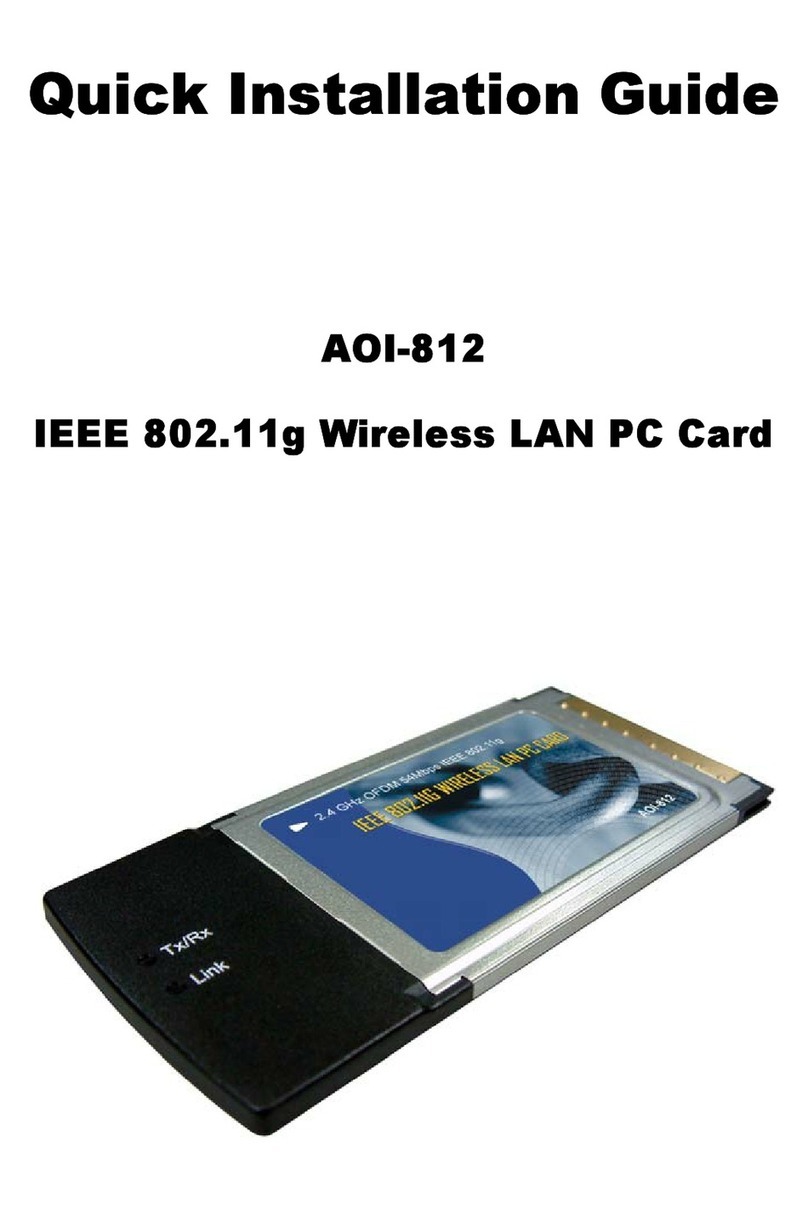
AOpen
AOpen AOI-812 User manual
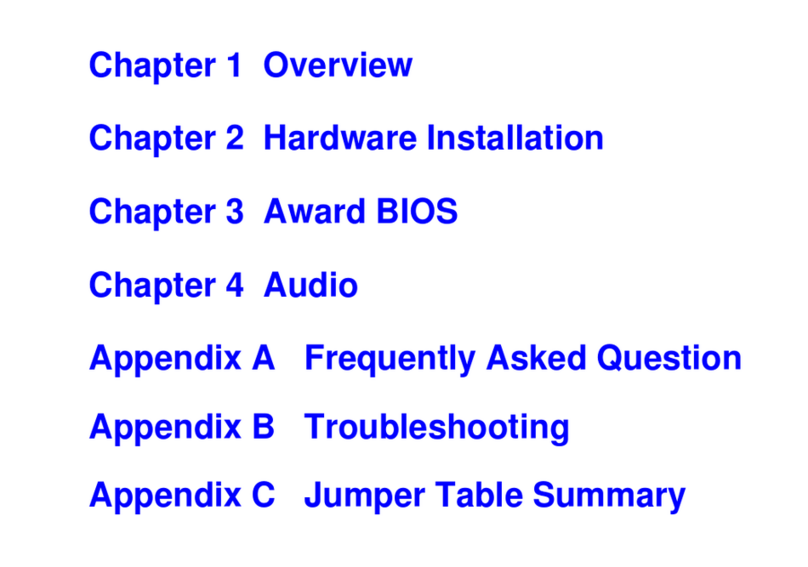
AOpen
AOpen MX6E PLUS User manual
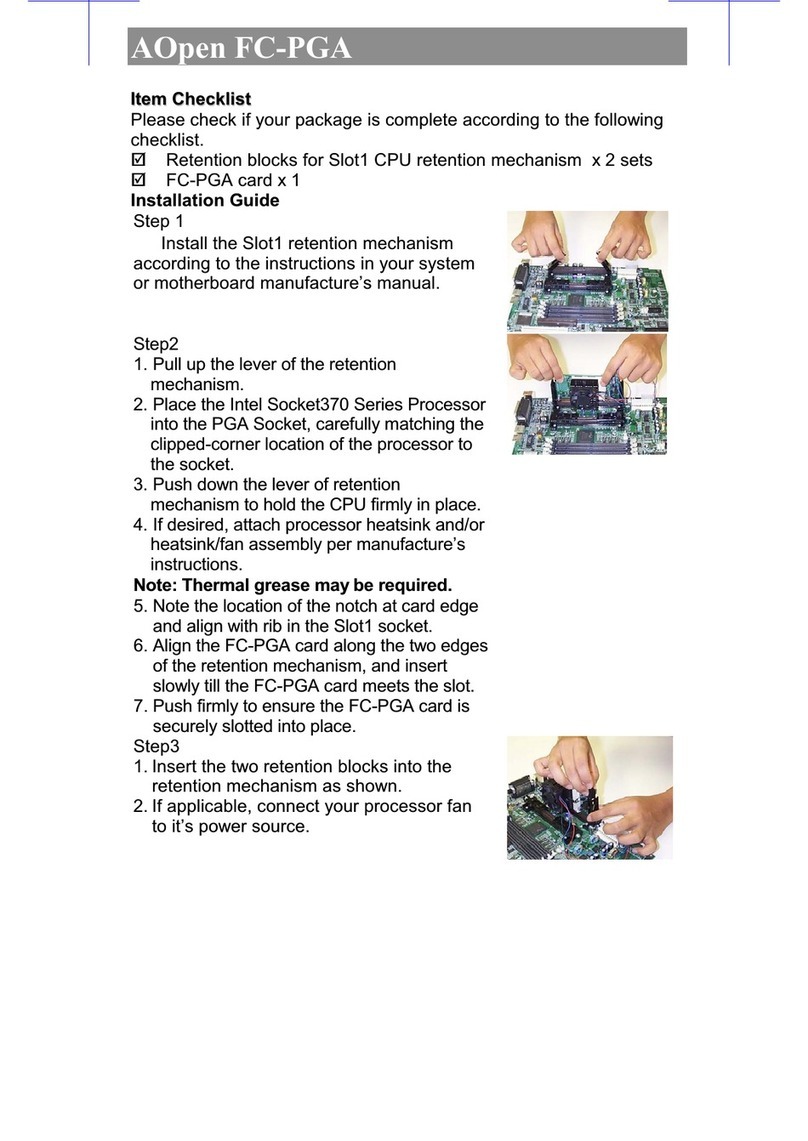
AOpen
AOpen FC-PGA User manual
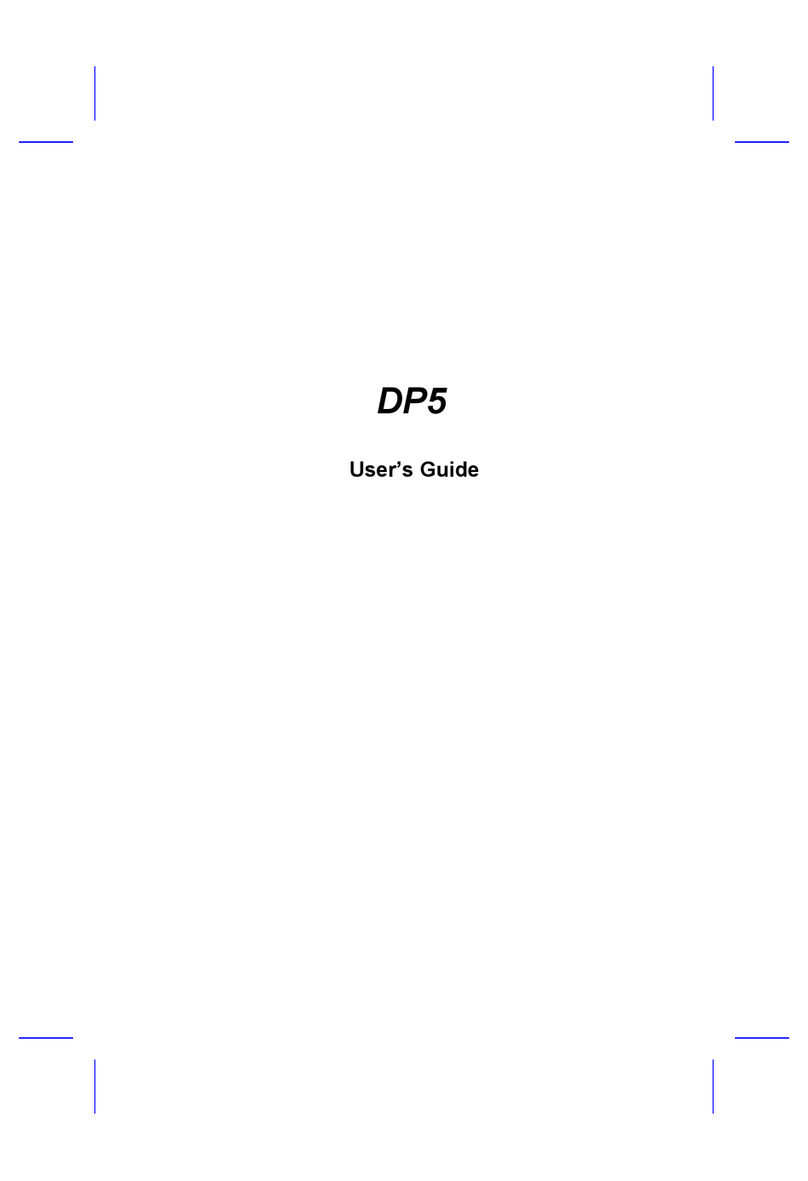
AOpen
AOpen DP5 User manual
